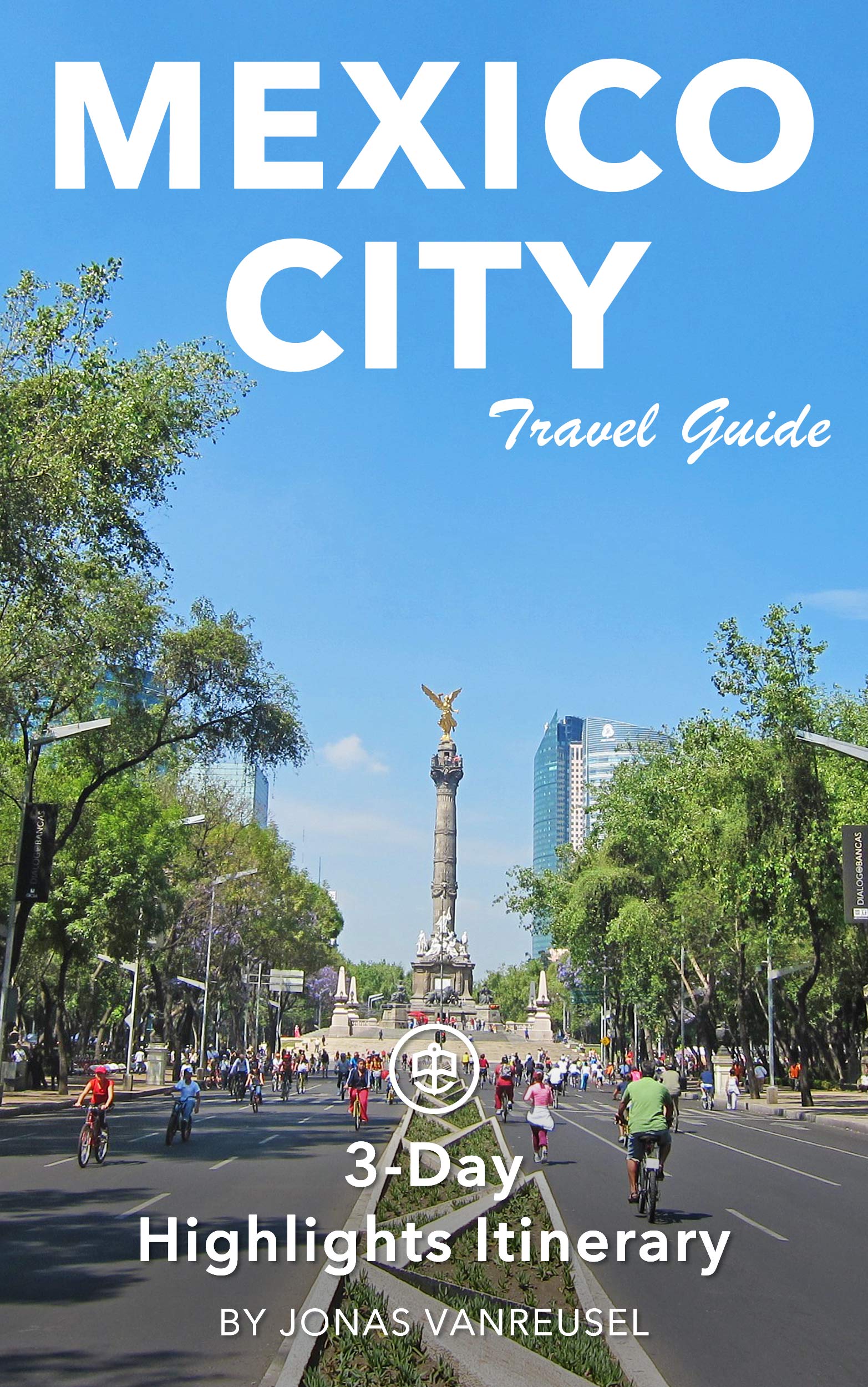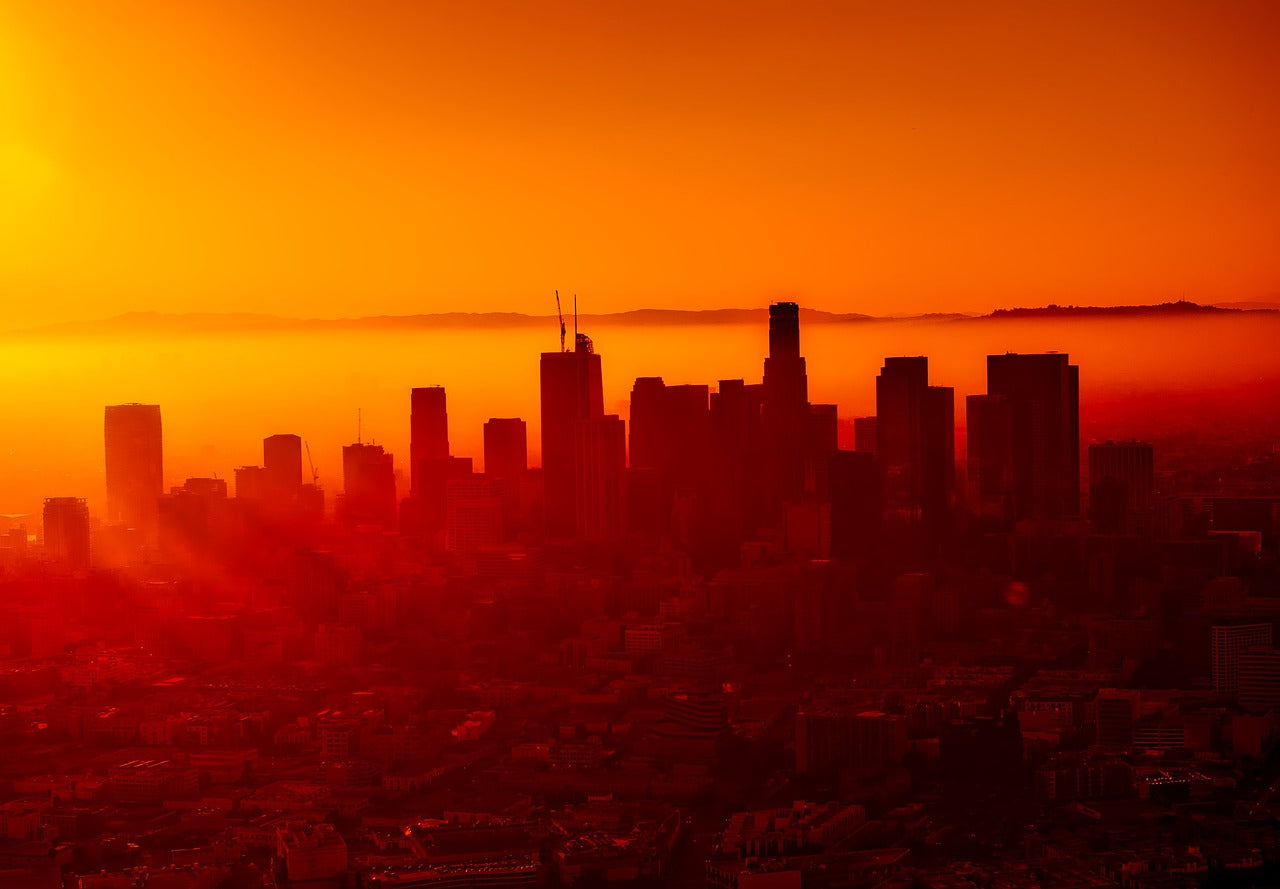- This itinerary is the perfect introduction to Mexico City, including both major sights and insiders places.
- Overcome safety and transportation concerns with many useful tips and directions on how to move around in the city as an independent traveller.
- Save money and time using public transportation.
- Includes a walking tour of historical downtown, the best parks and museums in the city center, and two day excursions (the south of the city and the nearby Teotihuacán pyramids ruins), with many explanations and insight-providing pictures.
- Clear and specific directions to each of the destinations. The directions are supplemented with pictures and maps to further reduce your chances of getting lost!
- Special attention to handicrafts, local religion and legends, folklore, markets, and bars provides you with the experience of a Mexico City local.
Sights & activities in this itinerary:
- Main downtown buildings and monuments: Cathedral, National Palace, Fine Arts Palace.
- Many references to the country’s history and the Aztec foundations (Templo Mayor, Chapultepec Castle).
- Traditional food and Mexican beer or tequila in cantinas and markets.
- Colonial palaces of the rich Spanish families.
- Historic shopping malls and club buildings from early 1900s.
- Check out typical handicrafts in shops and markets.
- Walk in one of the biggest parks in Latin America, Chapultepec.
- Take a boat ride through centuries of traditional farming on floating gardens.
- Visit the biggest basilica church and pilgrimage center of Latin America, dedicated to the Virgin of Guadalupe.
- Awe at the magnificent pyramids of a lost city, 1500 years ago it was almost as big as Rome, with incredible decorations, crafts and a complex irrigation system.
- Explore the best and trendiest nightlife.
- Discover the roots of Mexican indigenous culture in the National Anthropology Museum.
- Enjoy the bright colors of Mexican historic mansions in the suburbs.
- Discover the life of the most famous Mexican painters, Diego Rivera and Frida Kahlo (Blue House and Dolores Olmedo museum).
- Taste a sacred Aztec drink, pulque.
- Feel the religious atmosphere of the 16th century in churches and monasteries.
What does the itinerary include?
- Numerous pictures pointing to key landmarks to help you get where you need to go, as well as maps for every area visited.
- My contact information if you need anything else or have any other questions while in Mexico City.
- Tips on extra activities or complementary guided tours.
Itinerary Table of Contents:
- Introduction: How to Use This Guide, Practical info, Arrival and transport, Hotels and Restaurants.
- The 3-day highlights itinerary - I provide a detailed itinerary with activities, times, specific instructions, and some tips on extra activities if you have more time.
- About the Author -- Information about myself and how to contact me if you have additional questions.
Who Should Use This Itinerary?
Although anyone can benefit from the valuable information in this itinerary, it is especially well-suited for
- First-time (or second-time) budget-conscious visitors to Mexico City.
- People who only have a few days in the city and want to see most highlights without wasting valuable time figuring out what to do and how to get around
- Individuals who enjoy history, the arts, folklore, and food the locals love.
- Energetic people who are up for three days of walking, using public transport, doing day trips, and still getting a clue of what you are seeing.
Sample From the Itinerary
This is a sample of the itinerary, out of the Coyoacán visit. The actual itinerary includes additional pictures and maps.
If you want to check out some more handicrafts (for those of you that have already seen handicrafts in downtown Mexico City), including esoteric hippie stuff and interesting DIY stalls where you make your own handicrafts in half an hour, take a visit to the Bazar de Artesanías (at your left, before crossing the second square).
Tip: If you want a quick 45-min overview of the entire Coyocán neighborhood with explanations on its history, consider a touristic tram ride (they have a stop in front of the Church), for the bargain price of 45 pesos (giving you an additional discount in Frida's Blue House). While most of the tours are in Spanish, you can consider getting an English guide if you are a group (cost about 80 USD). Reservations details: www.tranviadecoyoacan.com.mx.
After crossing the second square with its nice stained glass and wrought iron gazebo, take a left to further awaken your senses with a cup of typical Coyoacán coffee in “El Jarocho”. Originally (in the 1950s) a grocery that roasted its own coffee, the owners soon realized the coffee was their most popular product and turned into a café, but without seats; you just sip your cappuccino on benches on the sidewalk. The raw material is good and fresh, so nowadays you find it all over Coyoacán, but this is the original branch of this Mexican Starbucks (double as good, half the price, and still immersed into the local economy).
If you are getting hungry by now, you can accompany your coffee with a typical churro (warm dough stick with sugar or syrup filling); you find them in several nearby stalls.
Alternatively (if you are really hungry), head one block further on Allende to the market.
At the center of this labyrinth of fruit stalls, piñatas and household items, where once La Frida herself went shopping, you will find several bright yellow tables of “Tostadas de Coyoacán”. Try some big round-shaped nachos with delicious toppings (from fresh lemon-cilantro beef salad to shrimp cocktail, or for the daring, the traditional raw pork skin salad, which tastes like rubber). Delicious, fresh, and don’t forget to get one of the 15+ fresh fruit juices with it.
11:30am - 12:30pm Frida Kahlo’s Blue House
From the market, it’s only three blocks further up Allende street to get to the (now famous) Blue House of the Frida museum
(corner with Londres; entrance 55 pesos, no photos in the rooms, only in the garden).
This is the former home of Frida, where she was born in 1907 and where she returned to live continuously after the death of her father and some turbulent years abroad with husband Diego (Rivera) in the 1930s. It has become a very popular visit after the movie “Frida” (2002, with Salma Hayek) that launched the female painter and her art into celebrity. Now she is even more famous and expensive than Diego, although the latter has left a more extensive artistic legacy. The rooms in the house have stayed the way the couple left it, becoming a museum a few years after her death: filled with art, letters, books, an amazing collection of Mexican handicrafts, and the famous tehuana dresses worn by Frida. While the museum hasn’t the best collection of Frida nor Diego, it does a very good job in recreating the famous couple’s life. You can prepare your visit with a virtual 360-degree tour of the place. Just click on the floor plan to see the different rooms: www.recorridosvirtuales.com/frida_kahlo/museo_frida_kahlo.html.
Tip: Real Fridamaniacs (or political activists) can walk on for two blocks on Londres and two blocks to the left on Gomez Farias, to get to the Trotsky museum, where the exiled Bolshevik moved after his supposed affair with Frida and before being murdered by a Stalinist agent.
Don't Forget:
- Have an amazing vacation, guaranteed! -- If you're not happy with the tour itinerary, Unanchor will gladly refund your money. (See below for additional details.)




